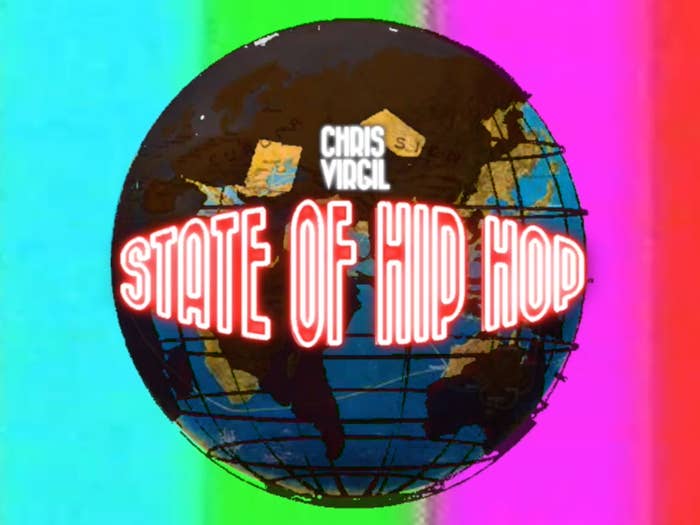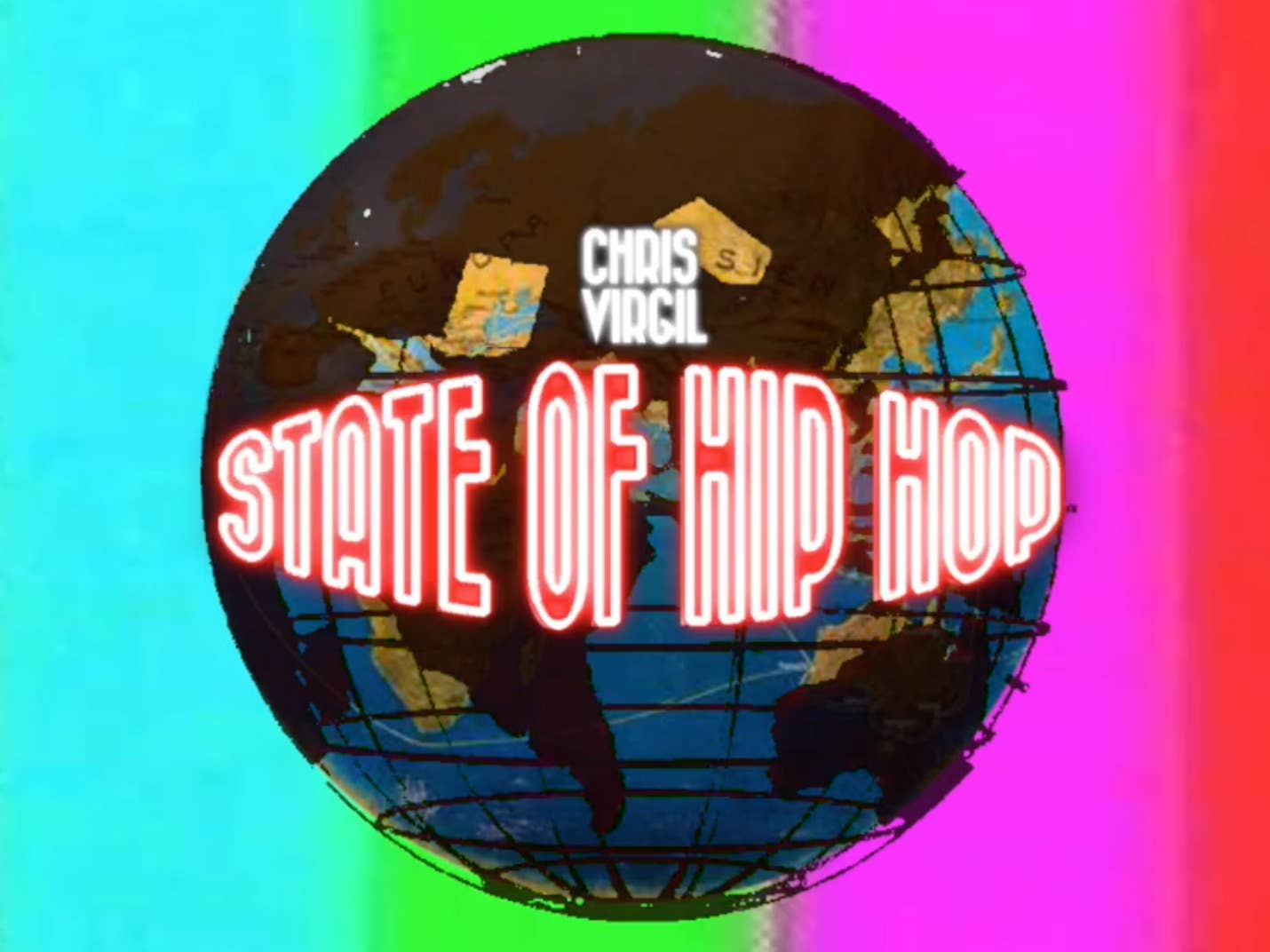
Traveling is a different experience every time, with a familiar set of questions. When do you start your trip? What do you bring? Where do you go? What do you eat? What do you see? Who do you travel with? I always have another question to answer: what am I going to listen to?
Whether it's Young Thug, Kanye West, or Odd Future, hip-hop has always been my most trusted travel companion. I find it hard to vibe with other travelers in general, especially in countries where I don’t speak the language. But the one thing that always bridged the gap was a communal love for this sound and culture, and the music that results when a foreign country tries its hand at hip-hop.
In Chiang Mai, I asked locals where I could hear “rap music”—they all pointed to one bar. It was nearly empty, but there were enough hip-hop heads present to warrant a few beers. It was a stark contrast to the “Compton to Seoul” show I attended in Korea, which featured DJ Yella from NWA, Trinidad James, Twista, Royce da 5’9, Sonny Digital, and a bunch of big Korean artists.
Different cities. Different countries. Different cultures. Different continents. No matter where I went, a different kind of hip-hop existed. I knew the artists had stories, and music was the way they shared.
Last year in East Asia I interviewed artists, explored clubs, and kicked it with local music lovers. The State of Hip-Hop is a video series that chronicles those encounters, those sounds, and those sights. Starting with China and moving each day through Japan, Korea, Hong Kong, and Taiwan, we’ll spend this week hearing the sounds and flows coming from the other side of the world.
China
View this video on YouTube
First up is China—I interviewed Bohan Phoenix, a rapper from Chengdu, China, in the green room of Tokyo venue. From rapping on the Apollo Stage at amateur night to becoming one of the biggest artists in Chinese hip-hop, Bohan has proved that his Jala wave has been spicing up the culture in China and it’s not going to stop anytime soon. Hip-hop is conditionally banned in the country, but artists like Bohan, Higher Brothers, and Kris Wu have built international buzz in spite of state opposition—it seems that for China, hip-hop is here to stay.
"The firewall allowed [China]... to cook up its own flavor," Phoenix says. "I think in time, it will become a super mature market...you're talking about one billion people. New York is a great place to go and visit, but you go there to build your confidence, then you take that and do great things elsewhere...we're not just fans now, we want to be part of the conversation."
Hong Kong
View this video on YouTube
The first night I arrived in East Asia, I went to an underground hip hop/future bass party on the Kowloon side of the city, hosted by the infamous Yeti Out collective. I soon found out there actually was no hip-hop in Hong Kong Island—it all existed in the Kowloon and Mongkok areas of the mainland.
I interviewed Doughboy and Seanie P of the Bakerie HK collective, who told me about the clash of cultures on the island, the dominance of EDM music, and how Hong Kong is still struggling to gain some traction on an island brimming with finance, close proximities, and fire dim sum.
Taiwan
View this video on YouTube
The song that inspired me to dive deeper into East Asian hip hop was “Weekends With Me" by Taiwan's Leo Wang and 9M88. It gave me a peek into an alternative hip-hop scene that I hadn’t seen from Asian music. "Right now is the first time it feels like...there are more than two independent artists that could pop," says local Taipei rapper LEO37. "For a long time it didn't feel like I was hearing the Taiwan story, I was hearing an American story told in Chinese."
Throughout my time exploring night markets, drinking boba, and eating stinky tofu around Taipei, I started to realize that this city was a rich source of sound, art, and dance; a hidden gem of rap culture and artists in the East China Sea that provided color and character for the rest of Asia.
Korea
View this video on YouTube
Korea is the powerhouse of sound in East Asia. Their greatest export is entertainment, and the government understands that and capitalizes on that by funding its music scene. They understand the power of the cultural arts’ influence.
That being said, seeing Korean hip-hop alongside West coast hip-hop at the “Compton to Seoul” event was a marriage of two sounds I would’ve never imagined. Trinidad James performed after Changmo. Junior Chef played Korean trap beats before Twista performed "Overnight Celebrity." Jay Park got more fan reaction than DJ Yella of NWA. Korea is still a K-pop country, but hip-hop is making its move.
Osaka
View this video on YouTube
Osaka, Japan's sound landscape matches its cultural landscape: chill. A lot of hip-hop artists and DJs continue to pay their respects to the old school, boom-bap hip-hop culture. Koh and Jass of Tha Jointz crew smoke weed in a non weed-friendly city, tag walls, and still rap with one pant leg up. They embody the old school hip-hop culture. As Koh says, "All you need is weed, love, peace, family, and homies. Fuck the police."
Young Savage Coco, on the other hand, is trying to challenge that chill and usher in Osaka’s trap scene. "In Tokyo there are more hip-hop clubs than here," he says. "Osaka is smaller than Tokyo, so the rap scene is more connected and close."
Tokyo (Part 1)
View this video on YouTube
Yentown collective dominates the sound and scene in Tokyo, Japan. They are the purveyors of cool, the guardians of melodic flow, and the gatekeepers of the culture. I saw and heard that firsthand when I was on stage with the Yentown during a show in Tokyo.
It was wild to see the youth of Tokyo moshing to Moneyhorse, Petz, and Awich’s performance. Hip-hop culture is still battling an outcast stigma in Japan, but groups like Yentown keep the culture moving forward regardless.
Tokyo (Part 2)
View this video on YouTube
Graduation is my favorite Kanye album, so Tokyo has always fascinated me. Why did hip-hop artists like Kanye and Pharrell flock to this city? It all made sense when I listened to Graduation while walking around Tokyo: the city has a magnetic energy, and those who dive into the culture bring that magnetism back wherever they’re from. And in the midst of it all, hip-hop is emerging from the shadows. "It's no longer the case that the bad kids listen to this music ," says local artist DJ Nacocamelia. "Hip-hop is becoming something that's considered cool and interesting by many people."
It's electric. The Japanese language flows like a Hokusai wave, slicing through the light and airy beats that gives the music its regional flavor. Tokyo is just cool, period. When hip-hop first [appeared]...back in the '70s and '80s, people got to be a part of this new genre-building," says Brandun DeShay, an American artist living in Tokyo. "That's the same kind of excitement I feel here in Japan... it's like the punk era, it's definitely bubbling."


![First up is China—I interviewed Bohan Phoenix, a rapper from Chengdu, China, in the green room of Tokyo venue. From rapping on the Apollo Stage at amateur night to becoming one of the biggest artists in Chinese hip-hop, Bohan has proved that his Jala wave has been spicing up the culture in China and it’s not going to stop anytime soon. Hip-hop is conditionally banned in the country, but artists like Bohan, Higher Brothers, and Kris Wu have built international buzz in spite of state opposition—it seems that for China, hip-hop is here to stay.
"The firewall allowed [China]... to cook up its own flavor," Phoenix says. "I think in time, it will become a super mature market...you're talking about one billion people. New York is a great place to go and visit, but you go there to build your confidence, then you take that and do great things elsewhere...we're not just fans now, we want to be part of the conversation."](https://img.youtube.com/vi/jkIlO4vKeKw/mqdefault.jpg)





![Graduation is my favorite Kanye album, so Tokyo has always fascinated me. Why did hip-hop artists like Kanye and Pharrell flock to this city? It all made sense when I listened to Graduation while walking around Tokyo: the city has a magnetic energy, and those who dive into the culture bring that magnetism back wherever they’re from. And in the midst of it all, hip-hop is emerging from the shadows. "It's no longer the case that the bad kids listen to this music ," says local artist DJ Nacocamelia. "Hip-hop is becoming something that's considered cool and interesting by many people."
It's electric. The Japanese language flows like a Hokusai wave, slicing through the light and airy beats that gives the music its regional flavor. Tokyo is just cool, period. When hip-hop first [appeared]...back in the '70s and '80s, people got to be a part of this new genre-building," says Brandun DeShay, an American artist living in Tokyo. "That's the same kind of excitement I feel here in Japan... it's like the punk era, it's definitely bubbling."](https://img.youtube.com/vi/czXO7z6ZoIE/mqdefault.jpg)